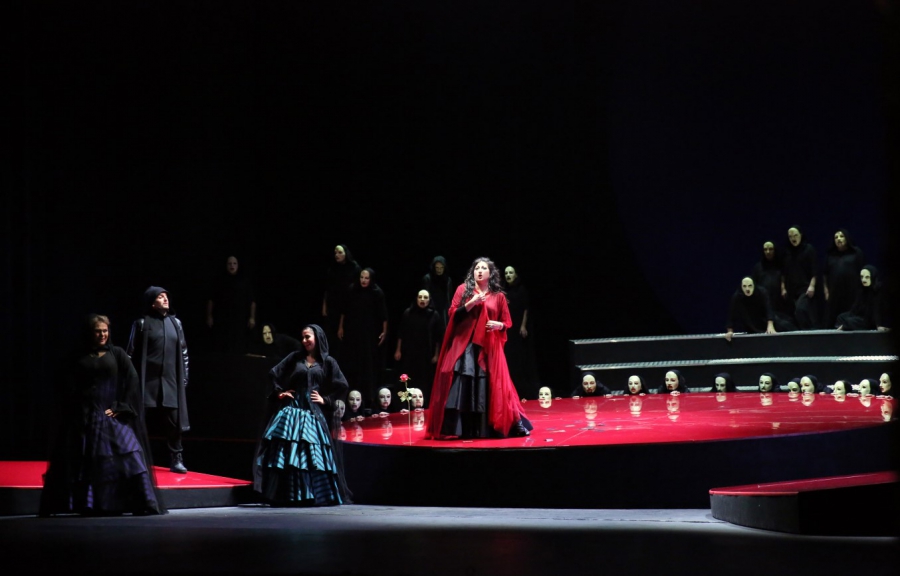The breaking off the social and folk-style pictures makes the opera close to the people of today
The audience has long awaited “Carmen” on the stage of our first opera theatre. Not because according to the most fans of statistics this is the favourite and most produced opera of worldwide importance, which shares its priority with Verdi’s “La traviata”. And because it is really a matter of shaking music, of arias, which are identified by millions of people all over the world, even without having ever seen the spectacle. The music critics long since associate the Habanera and the toreador’s song with pop culture. And exactly in this popularity are hidden many risks. Because to hear separate top moments from “Carmen” on records or in concerts is one thing, and it is quite different to experience in its entirety – through the sight and the ear (and also through the skin, which pricks) – the explosion of emotions and eternal human dilemmas, interwoven in George Bizet’s music and Prosper Mérimée’s text.
Exactly this explosion – beyond a concrete historical age and social milieu has achieved the stage director Plamen Kartaloff with his new production. In it the accent is on the feelings, on fate and the invisible threads, which define our life. The story of the disobedient, independent woman, who is ready to pay with her life the right to be free, is well-known since antiquity. And just because of this it is fully justified to take it out of a concrete social and historical envelope. Carmen could be from Spain in the 19th century, but she could be also from each other place and time. Bizet’s music does not limit the characters, on the contrary – it gives them an open space to be themselves today, here and now. And when this is achieved by means of directing, set design, dances and costumes, the result is really impressive!
In the new “Carmen” there is no minute of boredom! The lack of folk-style sets on the stage allows the spectator to concentrate on the action inside the consciousness of the well-known personages, elevated here to the magnitude of the Ancient Greek tragedies; to hear and see their drama. However, don’t imagine something difficult to understand. On the contrary, the play with the colours, with the dances of the brilliant soloists and artists from the ballet of the Opera, the presence of a chorus “without faces”, creates an organic and integral picture, from which you cannot tear yourself away. Specially I would like to point out the accent with the materialized “motive forces” of Fate, “Gods hands”, presented in a refined manner and played skilfully by three leading ballet dancers.
And the final of the opera – Carmen’s death – is again a brilliantly stylized by means of the ascent of her red rose from the earth to Heaven. A registered trade mark of Plamen Kartaloff is the refusal of naturalistic “blood scenes”. See the final of his “Tosca” and of “La traviata” and you will understand that the director resists to the so widespread curiosity of the crowd about the tragedy of the other one, he is searching in the end of the characters the artistically deduced meaning of their doom, the beautiful price, which they pay to be what they are and what we cannot be.
Actually, Mérimée’s novella “Carmen” does not shine with original plot. If we look at it like at an ordinary story of love, jealousy and death. The masterpiece in the opera of the same name succeeds namely because of the unity of music of genius, brilliant singers and stage realization, which open what’s happening to eternity, instead of closing it in the past centuries.
According to me this was the result in “Carmen” in November 2017 in Sofia.
http://www.jivotatdnes.bg/nachalo/news/kultura/karmen-izvan-shablonite-v-sofiyskata-opera
